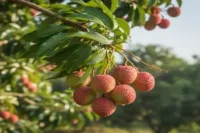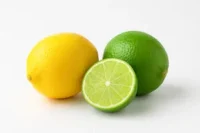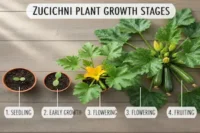What is Mulching in Agriculture: Types, Benefits, and Drawbacks
Published: 12 Nov 2025
Mulching in agriculture means covering the soil with materials like straw, leaves, or plastic to protect and improve it. Farmers use mulching to keep the soil moist, control weeds, and support healthy plant growth. But just like any other farming method, it has both good and bad sides. Knowing the advantages and disadvantages of mulching in agriculture helps farmers decide when and how to use it the right way. In this article, you will learn what mulching is in agriculture, its types, benefits, and the problems that can come with it, so you can make better choices for your crops and soil.
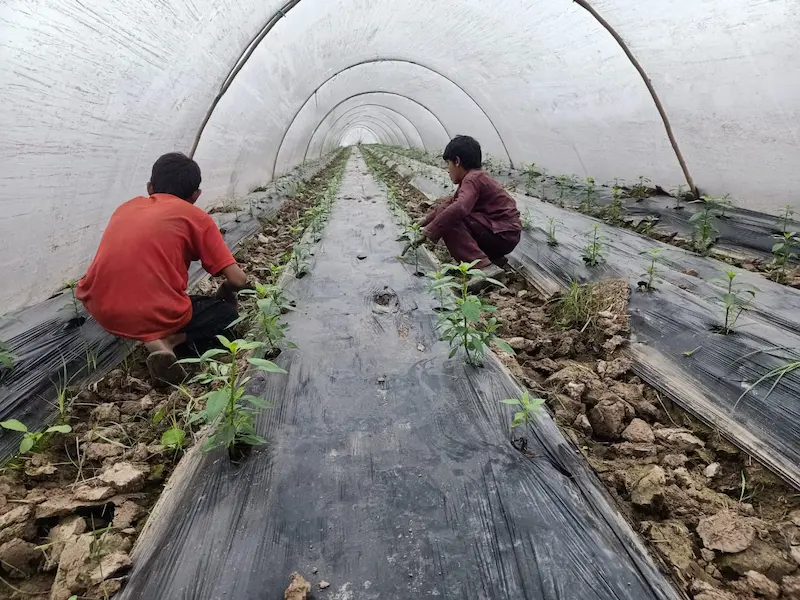
What is Mulching in Agriculture
Mulching in agriculture is the practice of covering the soil with materials like straw, leaves, grass, or plastic sheets. It helps retain soil moisture, control weeds, and protect plants from extreme temperatures. Mulch also improves soil fertility when organic materials break down. Farmers use mulching to support healthy plant growth and reduce labor for watering and weeding.
Types of Mulching in Agriculture
Mulching can be done using different materials depending on the crop and soil needs. Some mulches break down and add nutrients, while others mainly protect the soil. Farmers choose mulching types based on climate, water availability, and crop requirements. Each type has its own advantages and uses in agriculture.
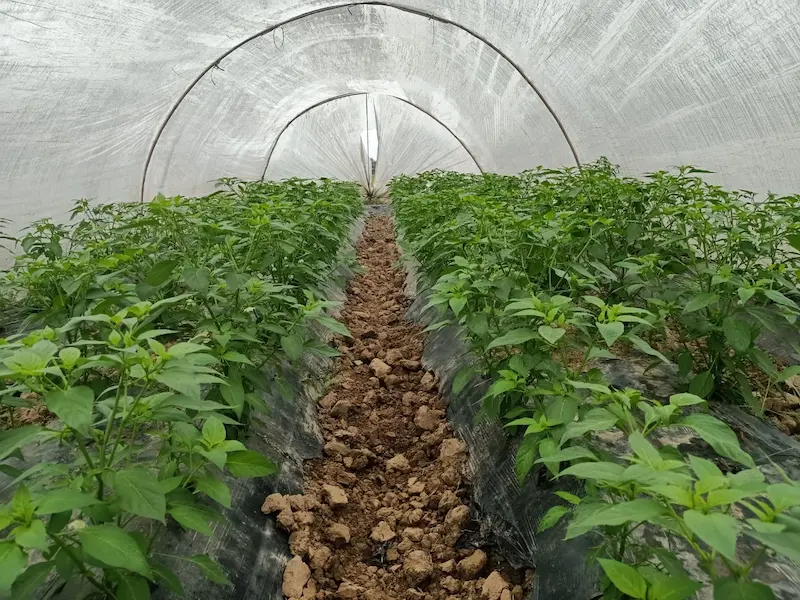
- Organic Mulching
- Inorganic Mulching
- Straw Mulch
- Grass Mulch
- Leaf Mulch
- Wood Chip Mulch
- Plastic Mulch
- Rubber Mulch
- Compost Mulch
- Fabric or Cloth Mulch
1. Organic Mulching
Organic mulch uses natural materials like straw, leaves, grass, or compost. It slowly breaks down and adds nutrients to the soil. It also improves soil structure and supports healthy microbes. This type is safe and eco-friendly.
- Adds nutrients to soil
- Improves soil texture
- Supports beneficial microbes
2. Inorganic Mulching
Inorganic mulch uses materials that do not decompose, like plastic, stones, or rubber. It mainly protects soil and controls weeds. It does not add nutrients but lasts longer than organic mulch. It is useful for long-term coverage.
- Long-lasting protection
- Reduces weed growth
- Does not improve soil fertility
3. Straw Mulch
Straw mulch is made from wheat, rice, or barley straw. It keeps soil moist and protects plants from extreme temperatures. Straw also prevents soil erosion during heavy rains. It is easy to apply and widely available.
- Maintains soil moisture
- Protects against temperature changes
- Prevents soil erosion
4. Grass Mulch
Grass mulch uses cut grass or lawn clippings. It helps retain water and reduces weed growth. Grass mulch also adds nutrients as it decomposes. It is best used in small gardens or farms with fresh grass available.
- Reduces weeds
- Adds nutrients naturally
- Keeps soil cool and moist
5. Leaf Mulch
Leaf mulch is made from fallen leaves. It protects soil from sun and wind. As it breaks down, it enriches the soil with nutrients. Leaf mulch also improves soil texture and encourages earthworms.
- Enriches soil nutrients
- Improves soil structure
- Attracts earthworms
6. Wood Chip Mulch
Wood chip mulch comes from tree branches or bark. It controls weeds and keeps the soil cool. It breaks down slowly and adds organic matter over time. Wood chips are ideal for orchards and garden paths.
- Long-lasting weed control
- Keeps soil temperature stable
- Adds organic matter gradually
7. Plastic Mulch
Plastic mulch uses sheets of black, white, or transparent plastic. It reduces water evaporation and blocks weeds. Plastic mulch warms the soil, which helps early plant growth. However, it needs proper disposal after use.
- Reduces water loss
- Controls weeds
- Warms soil for crops
8. Rubber Mulch
Rubber mulch is made from recycled tires. It prevents weed growth and protects soil from erosion. Rubber mulch does not decay and lasts a long time. It is mostly used in landscaping or long-term crop protection.
- Long-lasting coverage
- Prevents soil erosion
- Reduces weeds
9. Compost Mulch
Compost mulch is made from decomposed organic waste. It enriches the soil with nutrients and improves its structure. It also helps retain moisture and supports plant growth. Farmers use it to boost fertility naturally.
- Adds nutrients to soil
- Improves soil texture
- Retains moisture
10. Fabric or Cloth Mulch
Fabric mulch is made from woven or non-woven fabrics. It blocks weeds while allowing water and air to pass through. It is reusable and durable for several seasons. This mulch is good for vegetable gardens and nurseries.
- Blocks weeds effectively
- Allows water and air flow
- Reusable for multiple seasons
Understanding how to care for your crops goes hand in hand with using mulch effectively. For example, learning about lettuce growth stages can help you know the best time to water, fertilize, and protect plants with mulch. Similarly, following the tips on yellow cauliflower cultivation ensures healthy growth and colorful heads. These guides can help you plan your garden better and get the most from mulching.
Advantages and Disadvantages of mulching in agriculture
Mulching in agriculture has both benefits and drawbacks that farmers should know. It can improve soil health, save water, and help crops grow better. At the same time, improper use may cause problems like pests or excess moisture. Understanding both sides helps farmers use mulching in the best way for their fields.
Advantages of Mulching
Mulching in agriculture offers many benefits for soil and crops. It helps retain moisture, control weeds, and improve soil fertility. Mulch also protects plants from extreme temperatures and supports healthy growth. Using mulch properly can make farming easier and more productive.
Here are 15 pros of mulching in agriculture:
- Reduces water loss
- Prevents weed growth
- Improves soil fertility
- Protects soil from erosion
- Regulates soil temperature
- Saves irrigation water
- Improves soil structure
- Reduces plant stress
- Controls soil crusting
- Adds organic matter
- Encourages earthworms
- Improves crop quality
- Reduces fertilizer loss
- Saves labor time
- Enhances farm appearance
1. Reduces Water Loss
Mulching helps the soil stay moist for a longer time. It blocks sunlight and slows down evaporation. This means plants can use water more effectively. Farmers also save water during dry seasons.
- Keeps soil damp for longer
- Reduces water waste
- Saves irrigation costs
2. Prevents Weed Growth
A layer of mulch stops weeds from getting sunlight. When weeds can’t grow, crops get more space and nutrients. This helps plants stay healthy and strong. Farmers also spend less time removing weeds.
- Blocks sunlight for weeds
- Reduces competition for nutrients
- Saves time and effort in the wedding
3. Improves Soil Fertility
Organic mulch breaks down slowly and adds nutrients to the soil. This makes the soil rich and soft. It also increases the number of helpful microbes. Healthier soil leads to better plant growth.
- Adds nutrients naturally
- Increases soil microbes
- Improves crop yield
4. Protects Soil from Erosion
Mulch covers the soil and protects it from rain and wind. It stops the top layer from washing or blowing away. This helps the land stay strong and fertile. It also reduces soil loss during storms.
- Stops soil loss
- Protects during heavy rains
- Keeps nutrients in place
5. Regulates Soil Temperature
Mulch acts like a blanket for the soil. It keeps the soil cool in hot weather and warm in cold months. This stable temperature helps roots grow safely. Plants can grow without stress.
- Keeps soil temperature steady
- Protects roots from heat and cold
- Supports better plant growth
6. Saves Irrigation Water
Because mulch locks moisture in the soil, farmers don’t need to water often. This saves water and energy used for irrigation. It also helps during dry seasons when water is limited.
- Reduces watering needs
- Saves water and energy
- Supports plants during dry weather
7. Improves Soil Structure
Mulch adds organic matter that helps the soil stay soft and crumbly. Roots can spread easily in such soil. Good soil structure also allows air and water to move freely. This creates ideal growing conditions.
- Softens compact soil
- Improves air and water flow
- Encourages root growth
8. Reduces Plant Stress
Mulch protects plants from sudden weather changes. It keeps their roots safe and comfortable. Plants can grow steadily without facing heat or water stress. This results in healthier crops.
- Reduces weather stress
- Keeps roots safe
- Promotes steady growth
9. Controls Soil Crusting
When rain hits bare soil, it forms a hard layer on top. Mulch prevents this by breaking the force of rain. This keeps the soil loose and helps water soak in easily. Plants can absorb water better.
- Prevents a hard soil surface
- Improves water absorption
- Keeps soil loose and healthy
10. Adds Organic Matter
As organic mulch breaks down, it mixes with the soil. This adds valuable organic matter that feeds plants. It also helps improve soil texture and nutrient balance.
- Enriches the soil naturally
- Improves soil texture
- Promotes long-term fertility
11. Encourages Earthworms
Mulch creates a cool and moist environment that earthworms love. Earthworms help mix the soil and add nutrients. Their tunnels also improve air and water movement in the ground.
- Attracts helpful earthworms
- Improves soil mixing
- Enhances nutrient circulation
12. Improves Crop Quality
Mulch keeps fruits and vegetables clean by keeping them off the soil. It also protects crops from splashes and soil diseases. The final harvest looks fresh and healthy.
- Keeps produce clean
- Reduces soil-borne diseases
- Improves crop appearance
13. Reduces Fertilizer Loss
Mulch prevents nutrients from washing away during rain. It helps fertilizers stay in the root zone longer. This ensures plants can use nutrients fully for growth.
- Stops nutrient loss
- Increases fertilizer efficiency
- Boosts plant growth
14. Saves Labor Time
When weeds and watering needs are reduced, farmers save time. They can focus on other important farm tasks. It also lowers maintenance costs and effort.
- Cuts weeding time
- Reduces watering work
- Saves labor and cost
15. Enhances Farm Appearance
Mulched fields look neat and well-cared-for. The even layer gives a tidy and clean look. It also makes farms easier to manage and more appealing to visitors.
- Makes fields look neat
- Gives a professional appearance
- Improves farm management
Disadvantages of Mulching
While mulching offers many benefits, it also has some drawbacks that farmers should consider. Using the wrong type of mulch or applying too much can cause problems for crops and soil. Some materials may attract pests or create excess moisture that harms plants. Understanding these disadvantages helps farmers use mulching wisely and avoid damage to their fields.
- High initial cost
- Risk of pest attack
- Possible soil overheating
- Fungal or mold growth
- Difficulty in removing old mulch
- Plastic mulch disposal problems
- Can block water and air movement
- May delay seed germination
- Can cause nutrient imbalance
- Needs regular maintenance
- Requires careful material selection
- Labor needed for application
- Organic mulch may attract termites
- Excess mulch can suffocate roots
- Not suitable for all crops or climates
1. High Initial Cost
Setting up mulching can be costly for some farmers. Buying materials like plastic sheets or organic mulch takes money. Labor costs also increase during application. This makes it harder for small farmers to afford.
- Needs high investment
- Increases labor cost
- Not budget-friendly for small farms
2. Risk of Pest Attack
Some mulch types attract insects and rodents. These pests can damage roots and crops. Organic mulch, especially if too thick, gives them a safe place to hide. This can reduce crop health and yield.
- Attracts insects and rodents
- Damages plant roots
- Lowers crop quality
3. Possible Soil Overheating
Plastic mulch can trap too much heat in warm areas. This raises soil temperature beyond safe levels. Hot soil can stress roots and stop plant growth. Crops may wilt faster under such conditions.
- Raises soil temperature
- Stresses plant roots
- Affects crop growth
4. Fungal or Mold Growth
When mulch holds too much moisture, fungus may grow. This can cause root rot and other plant diseases. Poor air movement under mulch makes the problem worse. Healthy plants may weaken over time.
- Encourages fungal diseases
- Traps too much moisture
- Reduces plant strength
5. Difficulty in Removing Old Mulch
After a season, mulch often needs to be replaced. Removing old or decayed mulch can take a lot of effort. Plastic mulch, in particular, becomes hard to clean up. This adds extra work for farmers.
- Time-consuming cleanup
- Hard to remove plastic mulch
- Increases labor effort
6. Plastic Mulch Disposal Problems
Plastic mulch cannot decompose naturally. Farmers must dispose of it properly to avoid pollution. If burned or buried, it harms the environment. This makes waste management difficult.
- Causes waste pollution
- Hard to recycle
- Damages soil and air quality
7. Can Block Water and Air Movement
Too much mulch can prevent air and water from reaching plant roots. This causes roots to suffocate or dry out. Soil may also become compact under the mulch. As a result, plants struggle to grow.
- Reduces air flow to roots
- Blocks water entry
- Slows plant growth
8. May Delay Seed Germination
Mulch can keep the soil cooler in early growing seasons. This may slow down seed sprouting. Seeds need warmth and light to germinate quickly. Thick mulch layers reduce both.
- Slows down germination
- Keeps the soil too cool
- Reduces early plant growth
9. Can Cause Nutrient Imbalance
Some mulch materials take nutrients from the soil as they break down. This leaves less for the plants. Crops may show weak growth or yellow leaves. Farmers might need extra fertilizer.
- Reduces soil nutrients
- Affects plant color and health
- Increases fertilizer use
10. Needs Regular Maintenance
Mulch layers require regular checking and adjusting. Wind or rain can move mulch out of place. Farmers must spread it again to keep it effective. This adds more time and effort to daily work.
- Needs frequent attention
- Can shift during rain or wind
- Adds extra workload
11. Requires Careful Material Selection
Not all mulching materials suit every crop or soil. Some materials may hold too much or too little moisture. Choosing the wrong type affects plant growth. Farmers need to select mulch wisely.
- Not all mulches fit all crops
- Wrong choice harms plants
- Needs expert knowledge
12. Labor Needed for Application
Laying mulch takes time and effort. Large farms may need extra workers or machines. This increases the overall cost and work hours. It can slow down other farming tasks.
- Needs extra manpower
- Increases work time
- Raises total farming cost
13. Organic Mulch May Attract Termites
Wood chips or dry leaves can attract termites. These pests damage the wooden parts of irrigation systems or nearby trees. Managing them can be hard and costly. Farmers must stay alert.
- Attracts termites
- Damages to nearby wooden parts
- Increases pest control costs
14. Excess Mulch Can Suffocate Roots
If mulch is too thick, air and water can’t reach the roots. Roots may rot or stop growing. This weakens the whole plant. Balance is key for healthy soil and crops.
- Blocks air and water flow
- Causes root rot
- Weakens plant health
15. Not Suitable for All Crops or Climates
Some crops grow poorly under mulch, especially in wet or humid regions. Too much moisture can lead to disease. Farmers in such areas must be cautious before applying mulch.
- Not ideal for wet climates
- Increases risk of disease
- Limits crop variety options
Quick Facts About the pros and cons of Mulching
- Mulch keeps your soil cozy and moist, almost like a blanket for plants.
- It can save water and reduce how often you need to water your crops.
- Some mulches can attract bugs or rodents if not managed carefully.
- Plastic mulch works well, but it can get really hot and stress the plants.
- Mulch makes weeding easier, but too much can block seeds from sprouting.
- Organic mulch slowly adds nutrients to the soil, helping plants grow stronger.
Helpful Tips for Understanding the Benefits and Drawbacks of Mulching
- Choose the right type of mulch for your crop and soil.
- Don’t use too much mulch at once; a thin layer works best.
- Check mulch regularly for pests or mold.
- Replace or refresh organic mulch as it breaks down.
- Water plants properly, even when using mulch.
- Observe how your crops respond and adjust mulch use if needed.
FAQs
Here are some common questions and answers to help you understand the pros and cons of mulching in agriculture.
Mulching means covering the soil with materials like straw, leaves, or plastic. It helps keep the soil moist and protects it from heat or rain. Mulch also stops weeds from growing and adds nutrients if it’s organic. Farmers use it to make crops grow better and healthier.
Knowing both sides helps you make better decisions for your farm. You can use the benefits without causing problems. Some mulches may attract pests or trap too much water if used incorrectly. Understanding both sides keeps your crops safe and healthy.
Yes, mulching helps the soil hold water longer. This means you don’t need to water your plants as often. It’s especially useful during dry seasons. Saving water also reduces your labor and irrigation costs.
Yes, some risks exist if mulch is not managed properly. Too much mulch can block air and water from reaching roots. Certain types can attract insects or mold. Choosing the right mulch and checking it regularly reduces these risks.
It depends on your soil, crops, and climate. Organic mulch adds nutrients and improves soil structure. Plastic or inorganic mulch is good for weed control and moisture retention. Picking the right type helps you get the most benefits and avoid problems.
Conclusion:
Mulching has many benefits for soil and crops. It saves water, controls weeds, and improves plant growth. But it also has drawbacks, such as attracting pests or trapping too much moisture. Knowing both the advantages and disadvantages helps farmers make smart choices. The key is to use mulch carefully and balance its benefits with possible problems. Think about your crops, soil, and climate before applying mulch. Now it’s your turn to decide how to use mulching on your farm.

- Be Respectful
- Stay Relevant
- Stay Positive
- True Feedback
- Encourage Discussion
- Avoid Spamming
- No Fake News
- Don't Copy-Paste
- No Personal Attacks



- Be Respectful
- Stay Relevant
- Stay Positive
- True Feedback
- Encourage Discussion
- Avoid Spamming
- No Fake News
- Don't Copy-Paste
- No Personal Attacks
